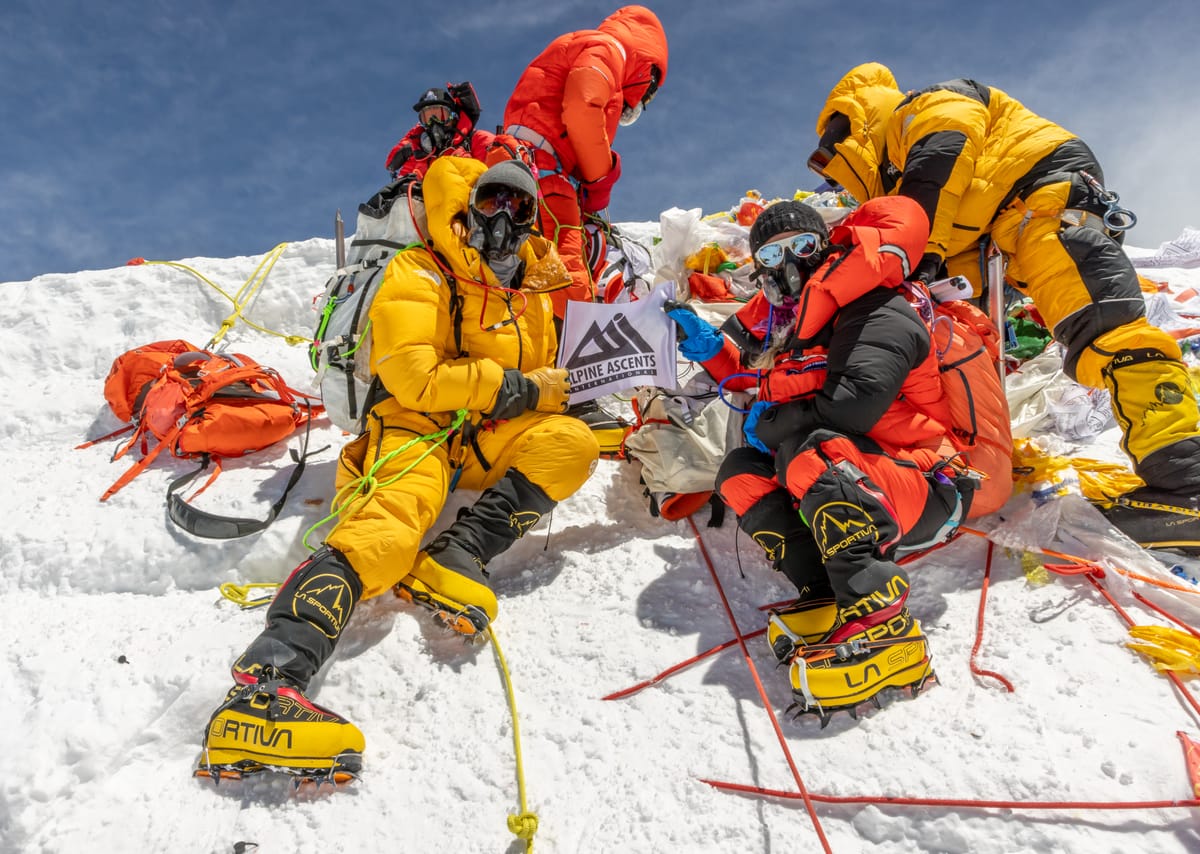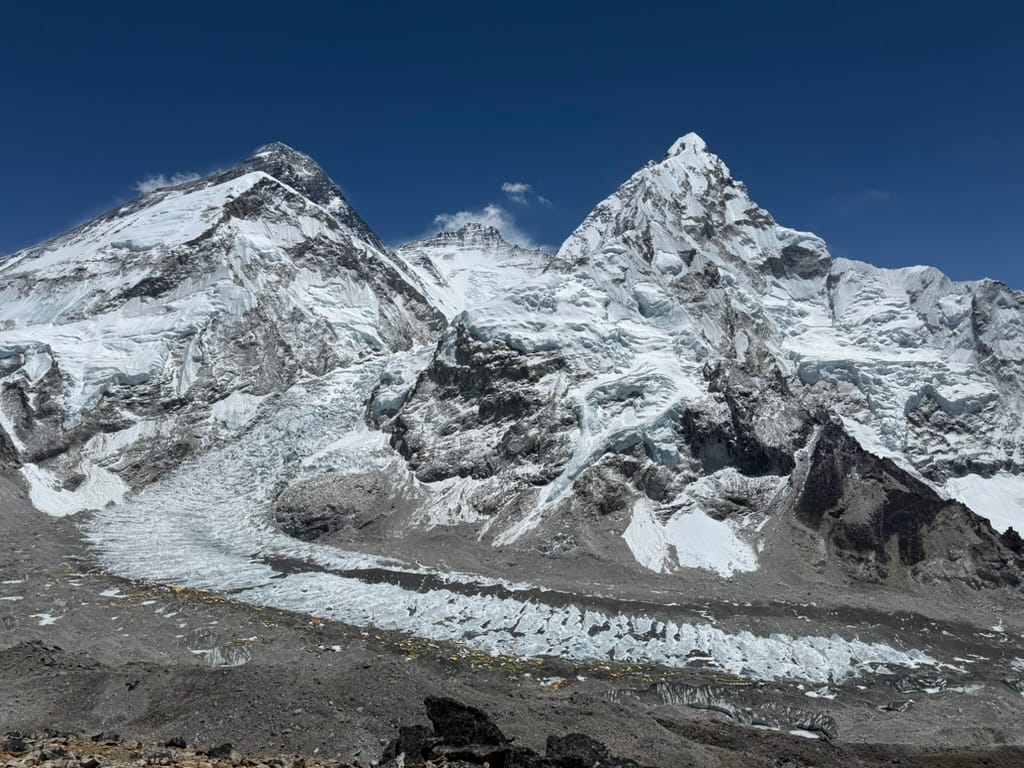Mt. Everest - Part 1

This is the first post of a seven-part series covering my 2025 Everest expedition. Subsequent posts will cover: (2) the trek to base camp, (3) life at base camp and FAQs, (4) our rotation on Lobuche East, (5) our rotation on Everest, and (6) our summit and the descent. I'll also write a final post on (7) the gear I used.
Why climb Everest?
"Because it is there." – George Mallory
“For in my heart, I needed to go . . . the pull of Everest was stronger for me than any force on earth.” – Tenzing Norgay
"I was having a midlife crisis." – me
Why write this blog?
Climbing Mt. Everest is a surreal experience, and even a few months after summiting, I'm still trying to process it all. By gathering my thoughts here, I hope to give you a clearer sense of what climbing Mt. Everest is actually like.
Before signing up for Everest, I hadn't met anyone who had even attempted it. Though I'd read several books on Everest, I'd always struggled to visualize the mountain and all of its famous landmarks, including the Yellow Band and Geneva Spur. This is my attempt to bring these features to life.

I also hope that quoting myself after George Mallory and Tenzing Norgay winds up being the most obnoxious part of this whole thing. Feel free to let me know if I've succeeded. With that, let's get on to Everest...
Who did you climb with?
I climbed Everest via the South Col as part of Alpine Ascent's 2025 Everest team, and we were led by the indomitable Ben Jones. I'd previously climbed Aconcagua with Alpine Ascents and knew they are a first-class outfit. I'd also previously met a professional climber who described Ben as "the only person [he'd] want to risk [his] life with on Everest." It was a pretty easy decision after that.
How long does climbing Everest take?
Climbing Everest is a massive endeavor, and it generally takes around seven weeks to successfully reach the summit. The timeline is dictated by how quickly you are able to adapt to the altitude. Once acclimated, my team needed just four days to get from base camp to the summit. It can, however, be done much faster. Lhakpa Gelu Sherpa holds the world record for fastest ascent of Everest via the South Col, which he completed just under 11 hours. Absurd.
Here is an animation showing the normal route to base camp. We turned west after Namche Bazaar and rejoined the route around Lobuche.
What does the acclimatization process look like?
In short, climb high and sleep low. Acclimatization takes time, and most teams complete two "rotations" before their summit push. What is a rotation? It's basically a term of art for climbing up and down part (or all) of a mountain in preparation for some larger goal. These repeated climbs allow the body to adapt to lower oxygen levels and atmospheric pressure.
In the chart below, you can see how we gradually increased elevation over the course of the expedition, with long breaks at base camp to recover. Our time at base camp is represented by the horizontal lines at 17,598 feet. What the chart does not show is that our trek to base camp included crossing a couple passes that were higher than base camp itself.

Acclimatization shortcuts
In recent years, some operators have marketed expedited trips, often involving the use of hypoxia tents prior to arrival in Nepal. In 2025, a team of British climbers completed their entire expedition in a week after experimenting with Xenon gas to spur red blood cell growth.
Neither method guarantees success, though. For instance, neither of these tools can replicate the decreased pressure you experience at altitude.
For those on tight schedules, I think these are interesting options. For me, I was happy to take the more traditional approach and enjoy more time in the Khumbu Valley. Some of my favorite memories of the expedition are from the rotations and downtime at base camp.
What's next?
My next post will cover our ten day trek to base camp.
Thanks for reading!